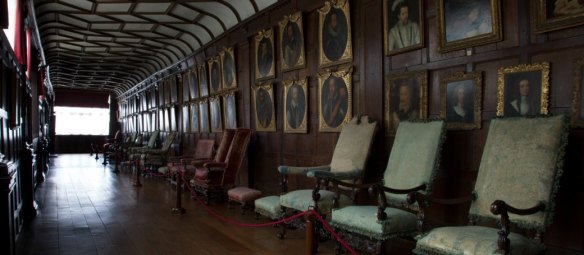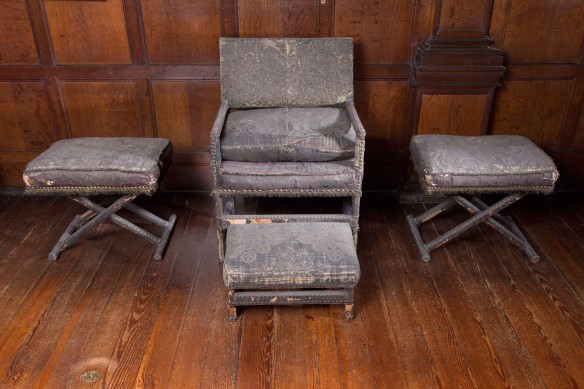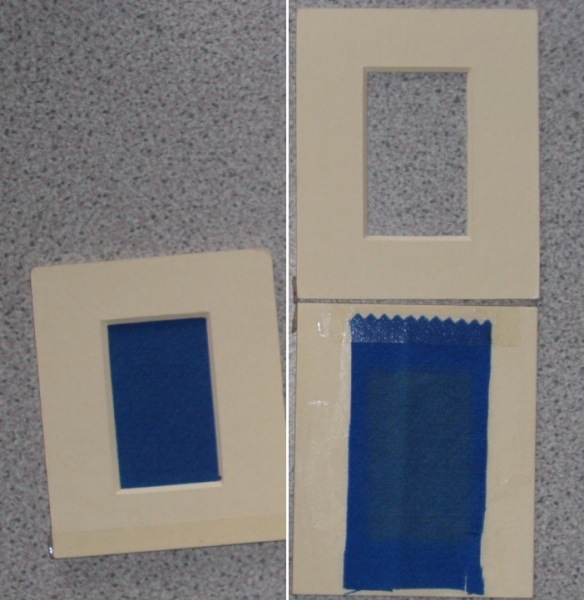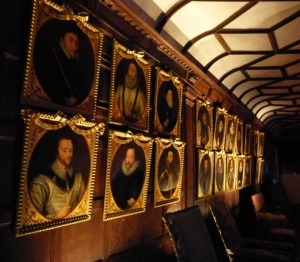Over the centuries, many visitors have found Knole to be a dark house. Back in the 1600s, the diarist John Evelyn was apparently so depressed by greyness of ‘this great old fashioned house’ that he had to hurry out into the sunlight. Today, some of our visitors still comment on the Knole’s often shadowy interior.

A house that ‘smoulders rather than sparkles’.
Many find this atmospheric lighting an integral part of Knole’s unique charm. But for the Conservation team, monitoring and controlling the light levels in the house is a key part of how we look after our fantastic collection. Obviously, we want our visitors to be able to see the beautiful objects. However, displaying our collection while minimising the damaging effects of light, is a constant challenge.

This suite in the Brown Gallery was once a vibrant purple colour but has heavily faded in the light.
When light falls on the surface of an object it provides energy. This induces a chemical reaction in the molecules of the material, which causes physical changes including the structural weakening of the fibres and a change in colour. The damage caused by this reaction is cumulative and irreversible. How vulnerable different materials are to light varies, but textiles particularly are highly light sensitive. We have the largest collection of English Stuart furniture in the world to have survived. It is internationally significant and we want to ensure that these magnificent pieces can be enjoyed for generations to come.
A key part of our work involves monitoring the light levels in the show rooms. If you look carefully at some of our furniture, you may notice small rectangular cards with a square of blue wool in the centre. These are called dosimeters and we use them to monitor the effects of light. They are placed on or near light sensitive objects and left in position for a year. Part of the blue wool is exposed while the other part is protected. When the dosimeter is removed and sent off for analysis, a measurement is made of the degree of fading. How much the blue wool has faded depends on the amount of light it has been exposed to. The conservation team also conduct regular checks to measures both the UV and the intensity of the light (lux) and we have two Hanwell LUX/UV monitors on the east and south sides of the building, which send back information to a computer in the office.

Knowing the fade rate of the blue wool allows us to accurately measure how much light objects and rooms are exposed to.
The most effective way to protect our collection is by preventing it from being exposed to too much natural light. We now have case covers on the furniture in the Spangled Dressing Room, to protect the incredibly fragile and deteriorating fabric. Historically, case covers have been used to protect special pieces of furniture in grand houses from the ill effects of light and dust. Should an important person come to visit the covers could be removed to reveal the textile underneath. Our red custom cotton case covers have been carefully made by upholstery conservator Heather Porter to ensure that each piece of furniture gets the individual protection that it requires.

One of our brand new case covers in the Spangled Dressing Room
The most damaging part of the light spectrum is ultraviolet (UV) and sunlight contains a high proportion of UV. Where possible we try to filter UV out by using a film on the windows of the show rooms. The light levels in the rooms are kept low and we only expose the rooms to light when it is necessary. However, the current electric lighting in the show rooms is inefficient and ineffective, meaning our collection is often poorly lit. This is something being addressed by the project. A scheme for new lighting has been designed by Sutton Vane Associates. Historic light fittings will be fitted with LED bulbs, which will not only significantly improve the presentation of the show rooms but will also help protect our collection.

This is from a trial conducted at Knole in the Brown Gallery. You can see how the proposed LED lighting will not only protect the vulnerable materials but really highlight our fabulous collection.
